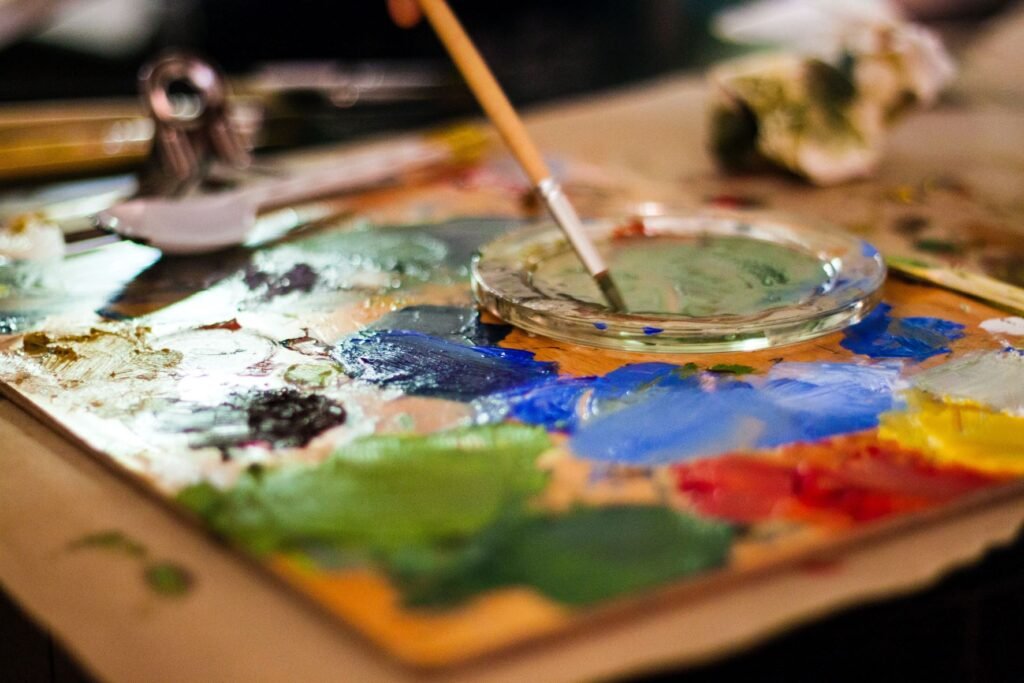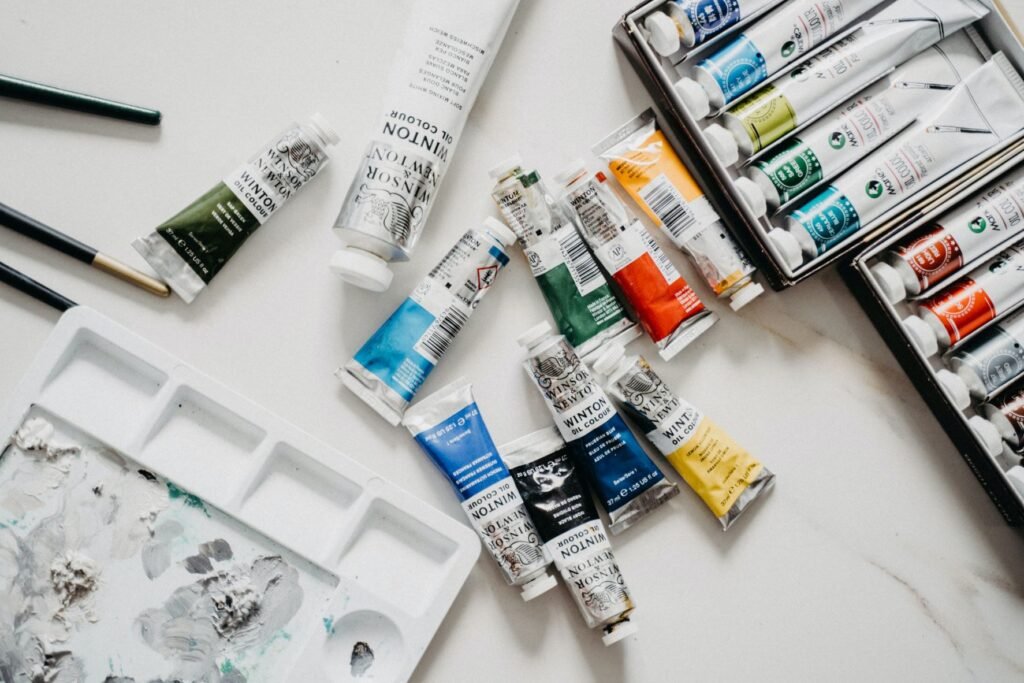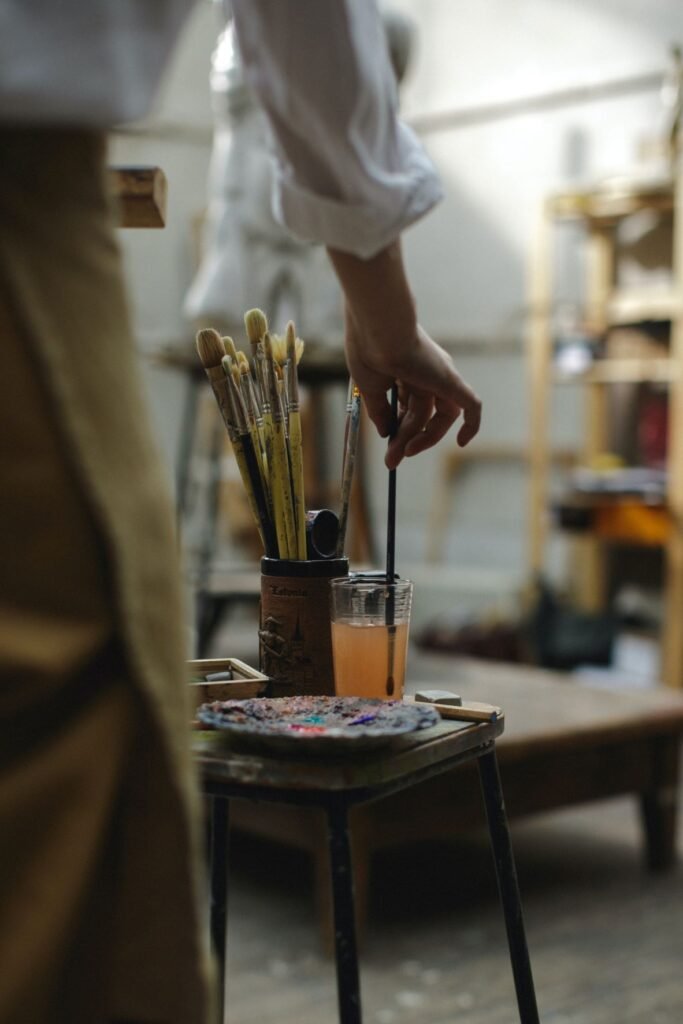Acrylic painting vs oil painting are two popular mediums in the world of visual art, each with its own unique characteristics, advantages, and techniques. Here’s a comparison between the two
What is Acrylic Paint?
In the two techniques, the main difference is that acrylics are based on water, while oil paints are based on oil. While this might seem inconsequential, it has a few important implications:
- Acrylics dry faster than oils, which makes them easier to work with for artists who want to create fast or spontaneous pieces.
- When painting, water-based products are less toxic and produce weaker fumes compared to oils. If you have asthma or allergies like me, this may be a better option for your health!
- Because they’re water-based, acrylics are more flexible and transparent than oil paints (which makes them ideal for glazing). This also means that you can use multiple layers without worrying about cracking or flaking over time like traditional oils do.

What is Oil Paint?
If you’re familiar with oil paints, you know that they are made from organic pigments and linseed oil. The linseed oil provides the paint with its texture, while the pigments give it color. Because of this composition, oil paints are thicker than acrylics, which means they’re more difficult to apply smoothly and evenly. They also take longer to dry than acrylics do — up to 30 minutes if used in an underpainting technique known as glazing. As a result of their thickness, oils can be applied over other layers without disturbing them (as opposed to acrylics), but this ability comes at an increased cost: Oils tend to be more expensive than acrylics because they require more materials for production and have lower yields per gallon.

Thinners
There are three things that all paint types need to be able to do:
- Hold pigment. Pigment is the color you want, and your paint needs to be able to hold onto it well enough that when you put it on a surface you don’t get any splotches or streaks in the wrong places.
- Flow smoothly from your brush or roller as you apply it. You don’t want clumps of dried paint clinging together, so your medium should allow for easy application without being too runny or too thick (this is where turpentine can help).
- Dry at an appropriate rate so that whatever medium is used as a modifier doesn’t interfere with how well either acrylics or oil paints stick together on their own (thinning with water slows drying time down; linseed oil speeds up drying time).

Transparency
You may also be wondering if acrylic paint is transparent. The answer is yes! While it’s true that oil paints can be transparent, they’re not much flexible than acrylics. When you apply an oil painting to a surface and let it dry, the paint becomes very stiff—it will crack if you try to move or flex it too much. Acrylics, on the other hand, are much more flexible and have less chance of cracking because they’re not as thick in consistency as oils are. This means that artists who use acrylics are able to create paintings with incredible detail and clarity—whether they’re doing portraits or landscapes!

Acrylics offer many benefits over traditional oils: They’re easier to clean up (just wipe them off with a cloth!), don’t require special brushes or equipment like palettes do (you can even use recycled containers such as yogurt cups), dry faster than oils do so there’s less time spent waiting around for projects before moving onto something else…the list goes on! So whether you’re trying out this technique for yourself or maybe just want some advice from people who’ve already done it? Just ask away!

Drying Time
Acrylic paint can dry in about 30 minutes.
Oil paint takes 48 hours to dry.
Color Mixing
When it comes to color mixing, acrylic paints are the clear winner. Not only do they have a higher transparency than oil paints, which means you can easily add and blend colors together, but they also have more flexibility when it comes to paint-on-canvas painting techniques. This makes acrylics more versatile than oils for mixed media artists who want bright backgrounds and bold strokes of color in their work.
Acrylics dry faster than oils too—which means they’re ideal if you’re painting on location (or anywhere else where time is short).

Acrylic paints dry much faster than oil paints. They are more flexible and are more transparent.
Acrylics are affordable, non-toxic, easy to clean up, and can be used on a variety of surfaces such as canvas cloth or paper board. They also dry quickly which makes them ideal for beginners since they won’t have to wait long before moving onto the next step in their painting process.
Conclusion
Ultimately, the choice between acrylic and oil painting depends on the artist’s preference, style, and desired effects. Some artists prefer the quick drying time and versatility of acrylics, while others enjoy the slow drying time and blending capabilities of oil paints. Experimentation with both mediums can help artists determine which best suits their artistic vision and technique.



